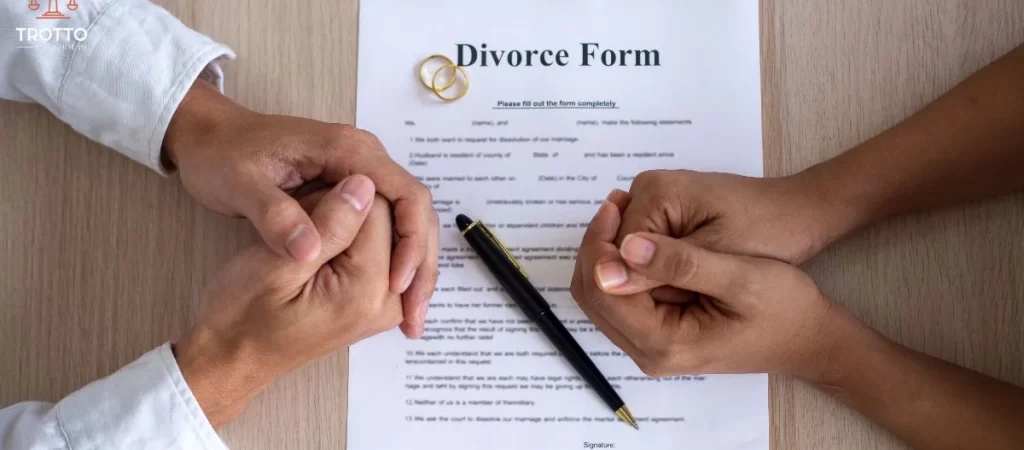Knowing how to file for an uncontested divorce in New York can save you time, stress, and money. When both spouses agree on key issues, like child custody, property division, and spousal maintenance, the process becomes more streamlined. Still, strict filing requirements must be followed to avoid delays. This guide walks you through each step of the uncontested divorce process in New York.
Residency and Filing Requirements
To file for an uncontested divorce in New York, at least one spouse must meet the residency requirement for divorce. This typically means living in New York for at least one year before filing. The grounds for divorce, such as irretrievable breakdown, must be recognized under state law. Once eligibility is established, the filing spouse must complete forms to initiate the divorce process.
Filing the Divorce Papers and Other Forms
The county clerk is a good source for filing forms. If the other spouse is not contesting the divorce, they must sign an affidavit agreeing not to dispute the divorce. This signature allows the case to proceed without court appearances.
As with contested divorces, both parties must disclose their finances. Various forms can be used to disclose net worth statements and child support worksheets if children are involved. Additional paperwork may address custody, visitation, and parenting agreements.
Property Division in Uncontested Divorce
New York follows equitable distribution, requiring a fair division of marital property. This can include real estate, bank accounts, pensions, and debts. In 2022, the state recorded about 2.3 divorces per 1,000 residents, and many of those cases involved property settlements.
As of May 2025, the average home value statewide is $501,982, reflecting a 4.9% year-over-year increase. The value of a home can significantly affect the outcome of divorce agreements, especially when equity is divided between spouses.
Benefits of Uncontested Divorce
Roughly 44% of all households in New York are married-couple households, and many couples choose uncontested divorce to avoid litigation and reduce costs. When both parties cooperate, the process is faster and less emotionally draining. After court approval, the judgment of divorce is entered, legally ending the marriage and restoring both parties’ right to remarry. Processing times vary by county.
It is important to remember that even an uncontested divorce could lead to a contested divorce. If your spouse begins disagreeing with you on the terms of the divorce, you may find yourself at a disadvantage, especially if you do not have legal representation.
Can the Terms of an Uncontested Divorce Be Enforced?
Once an uncontested divorce is completed and signed by a judge, those agreements become binding and enforceable. If your spouse fails to follow through with the terms of the division of the estate or violates any part of the final order, you can work with an attorney to go back to court to enforce the action.
Enforcement actions require evidence to back up the claim. An attorney can help you gather the proof you need to show a judge that your spouse did not comply with some part of the divorce judgment. A hearing can be set where they are ordered to appear to answer for their actions. The courts have wide leverage to enforce violations of court orders.
FAQs
Q: How Long Does an Uncontested Divorce Take in NY?
A: An uncontested divorce in New York typically takes several weeks or longer from filing to final judgment, depending on the county and court backlog. Cases with missing documents or errors can take longer. Prompt filing, complete paperwork, and proper service of documents help avoid delays. You can reduce your wait time by making sure that your filings are accurate before submission to the court.
Q: How Much Does It Cost to File for an Uncontested Divorce in NY?
A: New York requires filing fees, an index number, and a judgment form. Other costs may include process service or document preparation. If you have a large marital estate, you may need to hire an outside financial consultant to make sure your assets and property are accurately accounted for. Mistakes can lead to rejections that could require refiling and additional fees. Although hiring a lawyer is optional, it can help avoid costly errors.
Q: Do You Need a Lawyer for Uncontested Divorce in NY?
A: A lawyer is not legally required for an uncontested divorce in New York, but working with one can help ensure the process goes smoothly. An attorney can help draft the agreement, review terms, and confirm compliance with court requirements. Even if the divorce is amicable, it is important that both you and your spouse have legal representation to protect your rights and interests.
Q: Do I Have to Appear in Court for an Uncontested Divorce?
A: Most uncontested divorces in New York do not require a court appearance. If all documents are correctly filed and both parties agree to the terms, the judge typically signs the divorce judgment without a hearing. However, if issues arise or paperwork is incomplete, the court may request further clarification or limited appearances.
Q: What Happens After the Judge Signs the Divorce Judgment?
A: Once the judge signs the divorce judgment, it becomes a legally binding court order. The County Clerk will enter the judgment and return a copy to you or your attorney. This document formally ends the marriage and includes the enforceable terms related to property, support, and parenting. Both parties should keep a certified copy, as it may be needed for future legal, financial, or personal matters such as changing your name or updating marital status.
Contact an Uncontested Divorce Lawyer Today to Learn Your Options
Filing for an uncontested divorce in New York can be a more efficient and affordable way to end a marriage, but it still requires careful attention to detail. You and your spouse must agree on every major issue, including asset division, child custody, and support. Once the necessary forms are completed and filed with the court, the process typically moves forward without a hearing.
At Trotto Law Firm, P.C., we help clients prepare and file uncontested divorce paperwork correctly the first time. Our team can ensure that your agreement meets court requirements and protects your long-term interests. Contact our office online today to get started.






